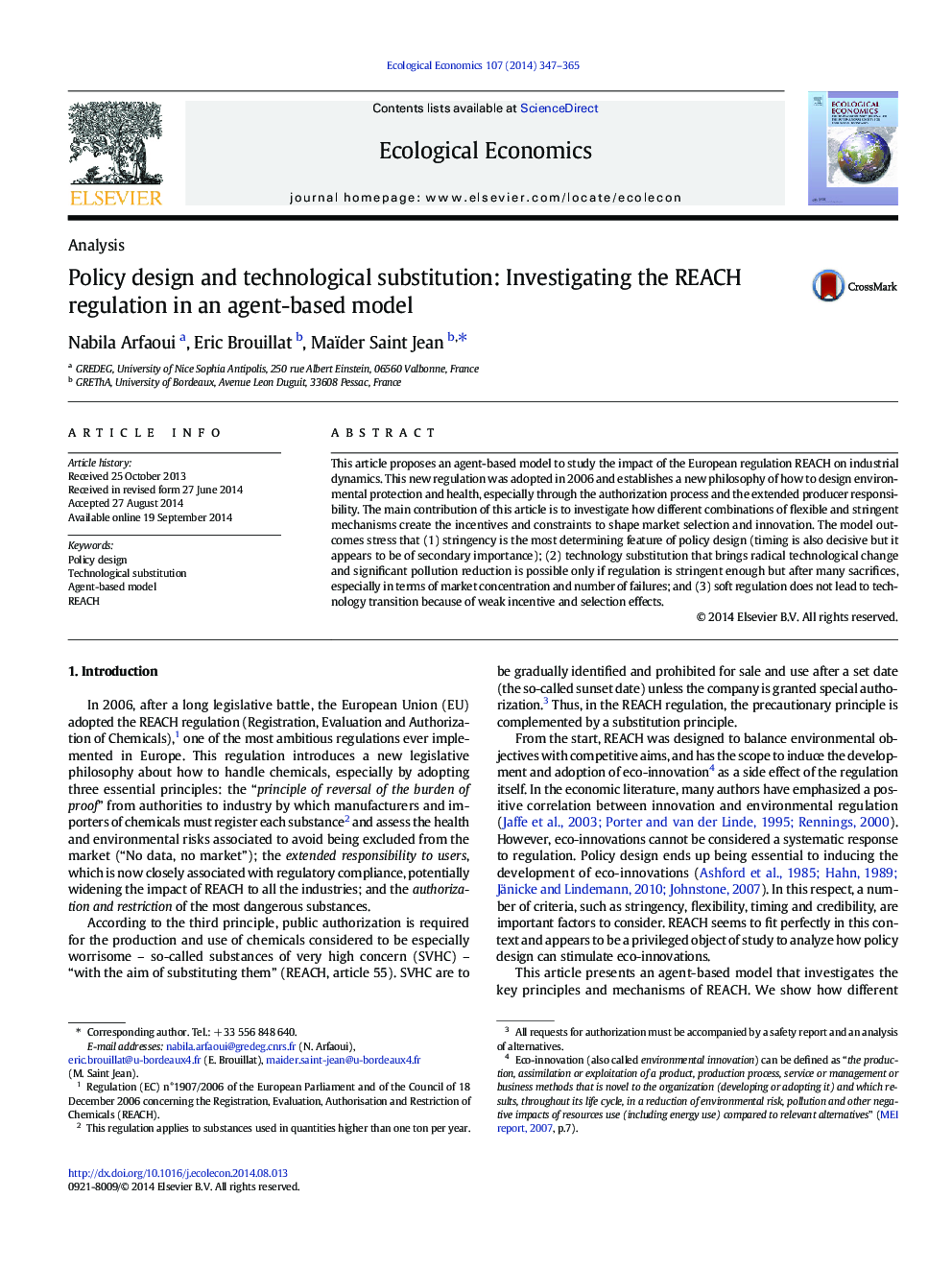| Article ID | Journal | Published Year | Pages | File Type |
|---|---|---|---|---|
| 5049528 | Ecological Economics | 2014 | 19 Pages |
â¢We use an agent-based model to study the impact of REACH on industrial dynamics.â¢We examine different policy designs to support substitution of chemical substances.â¢Stringency is the most determining feature while timing is of secondary importance.â¢Technology substitution occurs with stringent regulation involving sacrifices.â¢Soft regulation has weak incentive to innovate and disruptive selection effects.
This article proposes an agent-based model to study the impact of the European regulation REACH on industrial dynamics. This new regulation was adopted in 2006 and establishes a new philosophy of how to design environmental protection and health, especially through the authorization process and the extended producer responsibility. The main contribution of this article is to investigate how different combinations of flexible and stringent mechanisms create the incentives and constraints to shape market selection and innovation. The model outcomes stress that (1) stringency is the most determining feature of policy design (timing is also decisive but it appears to be of secondary importance); (2) technology substitution that brings radical technological change and significant pollution reduction is possible only if regulation is stringent enough but after many sacrifices, especially in terms of market concentration and number of failures; and (3) soft regulation does not lead to technology transition because of weak incentive and selection effects.
